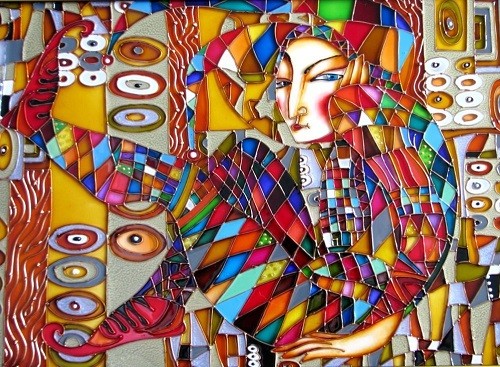Mirror Paintings
|
In 1961, after making a series of reflecting black-ground paintings significantly entitled The Present, Pistoletto conducted a series of experiments intended to achieve the highest degree of objectivity—the kind of objectivity shown in the early mirror paintings. To make the background more reflective he tried using aluminum sheets, which he applied to the canvas (Grey Man from Behind, 1961). Finally he identified mirror-finished steel as the best material. To give maximum objectivity to the figure, too, he decided to use photography.
|
Several trials followed. He applied cutout photographic images or photographic gelatin directly to polished steel—a solution he discarded because the photograph continued to look like an inserted object that contrasted with the immateriality of the reflected image. He also tried to use a normal mirror—another solution rejected because of the problems posed by the thickness of the glass.
At last, in 1962, he perfected the technique of his subsequent mirror paintings: a sheet of mirror-finished stainless steel fitted with an image obtained by tracing a photograph, enlarged to life size, with the tip of a brush, on tissue paper. After 1971 the painted tissue was replaced by a silkscreen of the photographic image.
The mirror paintings are the foundation of Pistoletto’s oeuvre—both of the artworks he makes and of his theoretical reflection in which he constantly returns to them to study their meaning in depth and to develop their implications. The essential characteristics the artist identifies in them, are: the dimension of time (not just represented, but presented in reality); the inclusion in the work of the viewer and his/her surroundings (which make “the self-portrait of the world”); the joining of couples of opposite polarity (static/dynamic, surface/depth, absolute/relative, etc.), constituted and activated by the interaction between the photographic image and what goes on in the virtual space generated by the reflecting surface; the placement of the mirror paintings no longer at window height, as paintings are traditionally hung, but on the floor (which creates a passage through which the space in which they are shown continues in the virtual space of the work, a door that opens between art and life).
The mirror paintings were first exhibited in Pistoletto’s one-person show at Galatea in April 1963. A few days after the opening Pistoletto went to Paris, where he met the American dealer Ileana Sonnabend, who later bought the entire show and took over Pistoletto’s contract with Galatea.
“I realized there wasn’t any sort of assent or interest around me: in fact there was a certain nervousness and rejection, mainly by the gallery owner himself. So I took a trip to Paris. There I met Beppe Romagnoni who told me about a gallery where strange and interesting paintings were being shown. So I dropped by the Sonnabend Gallery and asked to see these paintings. In this way I first saw Rauschenberg, Jasper Johns, Rosenquist and Lichtenstein’s paintings, and Segal and Chamberlain’s sculptures. They asked me if I was a critic and I said, no, I’m an artist. When asked what I did, I showed them the Galatea catalogue and a painting. They were struck by the work and came to Turin where they bought up the whole Galatea show. They took over the contract with Tazzoli and a situation developed that was extremely important for me: from my isolation in Turin, I was catapulted into an international dimension” (Michelangelo Pistoletto, interview with Germano Celant, cit., 26-29).
The mirror paintings quickly brought Pistoletto international acknowledgement and success, which in turn led to numerous one-person shows in Europe and in the United States (Paris, 1964; Brussels and Minneapolis, 1966; New York, 1967 and 1969; Rotterdam, 1969).
|
Plexiglass
|
In 1964, at Galleria Sperone, he showed a group of seven works in plexiglass and photography. The Wall, for example, is a simple sheet of plexiglass that leans against the wall. Double Stair is composed of two plexiglass sheets bearing the photographs of the two ramps that make up the stair. Coffee Table is a plexiglass parallelepiped to which are applied photos of a coffee table, a record and a newspaper. The subject matter of the latter two works is also employed in two mirror paintings of the same period. This is a first step in the exploration, in real space, of the new spatial dynamic discovered with the mirror paintings. It is also a stand taken with respect to the use of everyday objects in the art world that was being made at the time, and a first declaration of the ‘conceptuality’ of art.
|
“I find myself inside the picture, beyond the wall that is perforated (though not, of course, in a material sense) by the mirror. On the contrary, since I cannot enter it physically, if I am to inquire into the structure of art I must make the picture move outward into reality, creating the ‘fiction’ of being myself beyond the mirror. At the present time it is easy to play on the identity between reality-object and art-object. A ‘thing’ is not art; but the idea expressed by that same ‘thing’ may be” (Michelangelo Pistoletto, I plexiglass, Galleria Sperone, Turin 1964).











0 comments:
Post a Comment